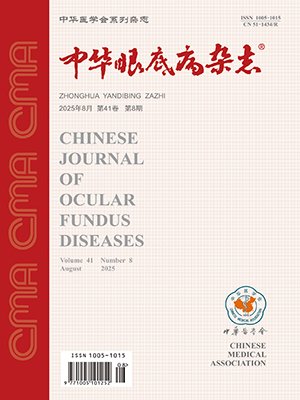Objective To investigate the effect of advanced glycation end products (AGEs) on the catalase activity and the levels of malondialdehyde in cultured bovine retinal capillary pericytes (BRPs), and to investigate the relationship between oxidative stress and diabetic retinopathy. Methods Cultured BRPs were exposed to AGEs (0, 8, 32, 125, 500, 2 000 μg/ml) for four days. Activity and the levels of catalase and malondialdehyde in cultured BRPs were examined by spectrophotometry. Results AGEs decreased the catalase activity, whereas increased the levels of malondialdehyde of cultured BRPs in a dose-dependent manner (r=-0.714, r=0.748, P<0.01).There were significant differences between BRPs cultured in 32 μg/ml AGEs and in control group (P<0.01), while no significant differences between BRPs cultured in non-glycated bovine serum albumin and absence of bovine serum albumin were found. Conclusion Oxidative stress may be one of the reasons why the pericyte disappears in diabetic retinopathy. (Chin J Ocul Fundus Dis, 2002, 18: 143-145)
Citation: CHEN Baihua,JIANG Deyong,TANG Luosheng. Modification of enzymatic antioxidants in bovine retinal capillary pericytes by advanced glycation end products. Chinese Journal of Ocular Fundus Diseases, 2002, 18(2): 143-145. doi: Copy
Copyright © the editorial department of Chinese Journal of Ocular Fundus Diseases of West China Medical Publisher. All rights reserved




